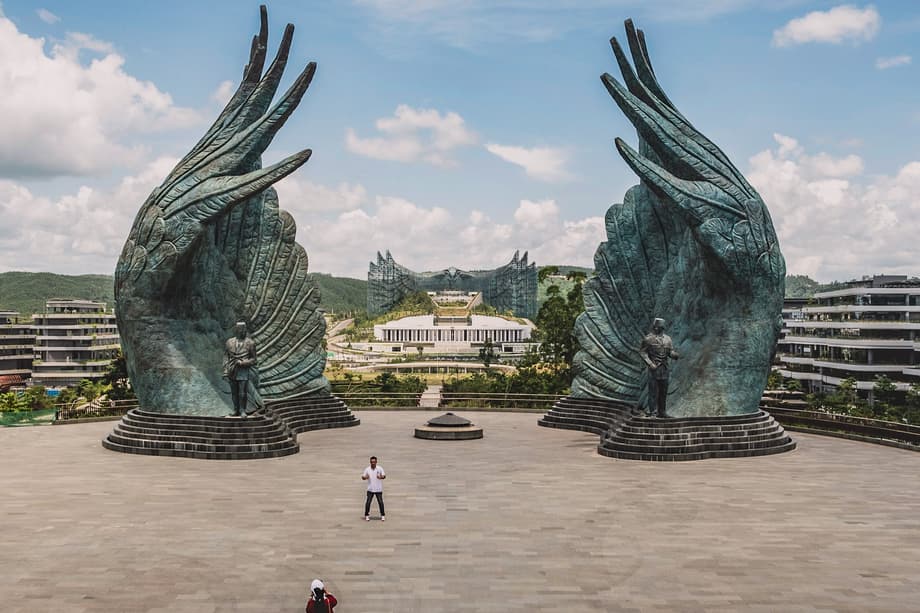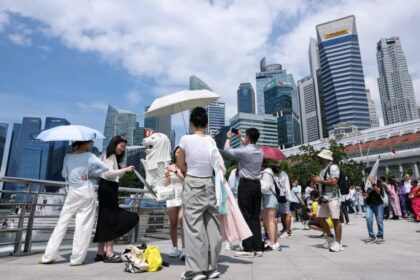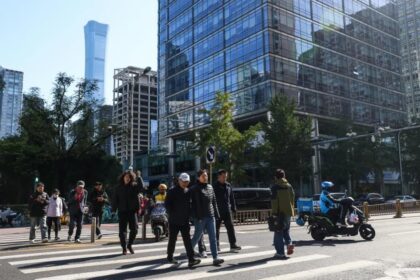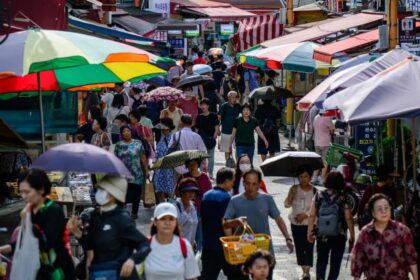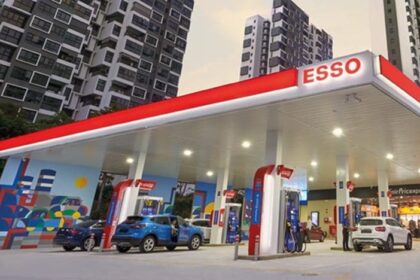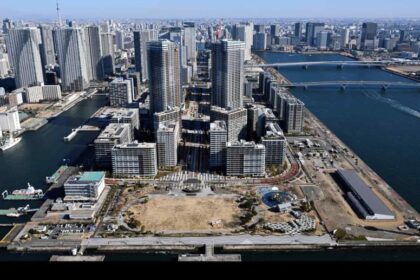Funding cuts and a pivot in purpose
Indonesia’s new capital, Nusantara, was conceived as a once in a generation reset for a country straining under the weight of Jakarta’s congestion, flooding and land subsidence. Five years after the plan was unveiled, the project is facing a sharper test. Under President Prabowo Subianto, state allocations for Nusantara have tightened. Budget proposals point to a reduction from about 2 billion pounds in 2024 to roughly 700 million pounds for 2025, with around 300 million pounds penciled in for the following year. Private capital has also lagged, leaving more than 1 billion pounds short of early targets.
- Funding cuts and a pivot in purpose
- What the project set out to fix
- Life on the ground: progress, empty streets and growing pains
- Environmental costs and justice concerns
- Politics and timelines: from bold vision to a slower march
- Can governance catch up with construction
- Who is investing, and who will benefit
- Jakarta after the move
- What to watch next
- Key Points
In May, Prabowo signaled a narrower focus by describing Nusantara as a political capital. The change, disclosed months later, does not carry clear legal force, yet it hints at a strategy centered on the administrative core rather than rapid citywide build out. The Nusantara Capital Authority itself saw turbulence in 2024, when its top leadership stepped down. On the ground, only about 2,000 civil servants and roughly 8,000 construction workers are living in and around the site, a fraction of the 2030 target of 1.2 million residents and well short of the longer horizon of 1.9 million people by 2045.
Officials say the project endures. Apartments, a hospital, an airport and major roads are in place or nearing completion, and the administration insists funding and political commitment remain intact. Local shopkeepers and small contractors tell a different story, reporting thin foot traffic and fewer orders. Environmental groups warn of damage to ecosystems and indigenous livelihoods. Residents who have visited describe a clean, futuristic setting, yet they also note long stretches of empty boulevards and a still unfinished city core.
What the project set out to fix
Jakarta is one of the world’s most crowded coastal megacities. Decades of unregulated groundwater extraction have caused parts of the city to sink. Heavy rains and rising seas add to the flood risk. Chronic congestion slows commerce and erodes quality of life. Planners pitched Nusantara, on the island of Borneo in East Kalimantan, as a model of liveability and green urban design. The blueprint envisions a smart, sustainable city with extensive forest cover, a target of net zero emissions by 2045, and an administrative center that can help rebalance growth away from Java, where close to 60 percent of Indonesians live.
To embed sustainability and rights from the start, Nusantara’s planners are using a Voluntary Local Review, a United Nations supported tool usually applied to existing cities. The approach is designed to improve transparency, track measurable progress, and engage stakeholders such as the Balik and other indigenous communities. Lessons from other capital relocations in Asia are in the mix: Putrajaya’s attention to land rights and green corridors, Sejong’s phased approach and climate resilience, and Astana’s emphasis on long range planning. Success for Nusantara still hinges on governance, investment discipline and trust from the people expected to live and work there.
Life on the ground: progress, empty streets and growing pains
Visitors arriving today find striking visuals. A sweeping highway climbs into a construction zone where the new presidential palace, crowned by a giant winged eagle, overlooks orderly grids of roads and administrative buildings. Apartment blocks, a hospital, and an upgraded airport hint at an urban core taking shape. Yet the pace of occupancy is slow. Away from the work sites, wide boulevards can feel empty, interrupted mostly by landscaping crews and curious tourists.
A quiet start and a pest surprise
Holiday surges have brought a different kind of trial. During the Eid period, crowds left behind litter that drew rodents out of old burrows. Health and sanitation crews scrambled to deploy traps and expand clean up operations. The city’s caretakers say the issue is being managed, and that it reflects the reality of building in what was, until recently, a wooded landscape.
Thomas Umbu Pati Tena, the Nusantara Capital Authority’s deputy for development control, acknowledged the context and pledged to respond.
This used to be a forested, hilly area. Naturally, there are many old rat nests. But we are not sitting idle. Our health and community teams are already working on this.
Commercial life has yet to settle. Some restaurants and guesthouses report fewer customers after initial bursts of curiosity. Community leaders near the site speak of mixed feelings. There is pride in the national project and hopes for tourism and cultural exchanges. There is also fear that locals will see fewer benefits than those who win contracts inside the new city boundary.
Environmental costs and justice concerns
Indonesia’s government promotes Nusantara as a forest city, and says roughly three quarters of the site will remain green. Environmental advocates contend the footprint is already larger than advertised. They cite clearing of more than 2,000 hectares of mangroves and continued pressure on East Kalimantan’s forests, watersheds and wildlife. The sourcing of construction materials has created ripple effects beyond Borneo, with reports of flooding and dust pollution linked to quarrying and transport corridors in Sulawesi. Authorities reject claims of net harm and insist that Nusantara will deliver climate benefits through transit planning, reforestation and clean energy over time.
For people living closest to the project, the change is immediate. Indigenous communities along the Sepaku River say they are dealing with new flooding, muddier water and fewer places to fish as earthworks expand. Advocacy groups estimate that more than 20,000 indigenous residents could face displacement, while 21 distinct groups in and around the area risk losing access to forests used for food, medicine and culture. The government denies that development is driving negative impacts and says resettlement and compensation follow the rules. Critics counter that Indonesia still lacks strong climate adaptation laws and a comprehensive framework for future water stress in both Borneo and Jakarta, which leaves vulnerable households exposed.
What research says about land and conflict
Academic studies of land use change in the Nusantara zone show a steady expansion of built up areas since the early 2000s and a contraction of agricultural land. Researchers warn of impacts on biodiversity, food security and rural livelihoods, alongside social tensions over compensation and land claims. Proposed remedies include rigorous environmental impact assessments, zoning that protects ecological corridors, meaningful participation of indigenous and local communities in decision making, and legal recognition of customary rights. Advocates say that without these safeguards, the project risks producing concentrated benefits inside the city while shifting costs onto communities outside it.
Politics and timelines: from bold vision to a slower march
The original plan to clinch a symbolic inauguration on Independence Day in August 2024 slipped amid construction delays and a compressed schedule. Under the new administration, Nusantara’s designation as a political capital has added ambiguity for investors and civil servants trying to understand how fast the move will proceed. The shift comes as the government pursues a flagship free school meals program that is reshaping the fiscal agenda. Political buy in for Nusantara remains, but the pace is measured and the sequencing is changing.
There is now a clearer date for the top office. The Public Works Ministry says the presidential office is slated to move on August 17, 2028. Executive, legislative and judicial bodies, with their civil servants, are planned to follow by August 2029, subject to wider budget choices, including food and energy self sufficiency programs. To keep critical services on track, officials have proposed an extra 14.87 trillion rupiah for roads, schools and hospitals. That spending would go to the basics needed to make a political capital function, even if the larger urban vision unfolds in stages.
Will people and businesses follow
Moving government staff is logistically hard. Persuading private firms, universities, hospitals and families to uproot is harder. Sarah Moser, a geographer who studies new capitals, said the challenge is to build real urban life, not just office blocks and ceremonial plazas.
Once you have moved civil servants and their families, it is really hard to get other people to move.
Distance from a country’s main media and civic centers can change governance dynamics. Filipe Campante, an economist at Johns Hopkins University who has examined remote capitals, warns that oversight can weaken when power shifts away from scrutiny.
When the government is out there in some isolated capital, the big newspapers are not covering so much and then you have corruption as a result of that.
Critics also point to opportunity costs. Every rupiah spent on a new city is a rupiah not spent on flood control, mass transit, water security and public institutions in Jakarta, where tens of millions still live and work. Supporters respond that the country can invest in both, provided the timeline is spread over decades and the project unlocks new sources of growth in eastern Indonesia.
Can governance catch up with construction
Bricks and asphalt are only part of nation building. Nusantara requires deep coordination among ministries, state firms, provincial authorities and private developers. Scholars who have studied the project propose a smart bureaucracy model that includes clear strategic leadership, interagency coordination, strong operational teams, independent monitoring and evaluation, and a robust digital backbone. Phased implementation is key: first a comprehensive legal framework and empowered single authority; then core information and communications systems; and finally an integrated platform that delivers public services and transparent data to residents and investors.
The Voluntary Local Review, started early in Nusantara’s life, can bolster that approach. It creates a baseline to measure progress toward carbon neutrality in 2045, tracks forest conservation, and encourages data driven policy choices. It also places stakeholder engagement at the center, including the priority to consult indigenous groups and protect cultural heritage. By publishing credible indicators, authorities can build trust at home and signal to investors that the city is being managed with accountability in mind.
Who is investing, and who will benefit
Financing remains a balancing act. The state expects to fund roughly one fifth of the total cost, with the rest coming from domestic and foreign investors. Companies from several countries have expressed interest in roads, energy, transport and housing. Chinese firms have moved early with commitments across infrastructure, digital systems and industrial development. By May 2025, project announcements put Chinese investment near 70 trillion rupiah, alongside dozens of letters of interest. The first foreign developer broke ground on a mixed use complex, and major technology players have explored roles in building the city’s information backbone. The upside is capital, technology and jobs. The risk is overreliance on a single partner or debt terms that limit flexibility. Indonesian planners say the goal is to diversify funding sources and strengthen safeguards while inviting global participation.
Domestic industries see both opportunity and challenge. Cement producers expect public works at Nusantara and other projects to anchor demand over the next several years. The sector still struggles with overcapacity, high energy costs and pricing pressure. Producers are investing in lower carbon blends and alternative fuels, aligning with government green procurement ideas. Logistics upgrades, better inter island shipping and digitized operations could help. Nusantara can catalyze these shifts, but the industry’s deeper fixes depend on national market reforms.
Jakarta after the move
Even if Nusantara hits its milestones, Jakarta’s problems will not solve themselves. The capital’s subsidence and flood risks require stronger water management, expanded piped supply to curb groundwater pumping, coastal defenses where feasible, and better drainage upstream. Air quality, transit, and housing policy need sustained effort. Advocates argue that Indonesia still lacks comprehensive climate adaptation law for the scenarios Jakarta is likely to face. A twin city approach is taking shape, in which Jakarta remains the economic engine while Nusantara handles administration. If connectivity improves and institutions work smoothly between the two hubs, Indonesia could gain both a modern political center and a revitalized commercial heartland. If Jakarta is neglected, inequality will widen and Nusantara’s promise will dim.
What to watch next
Clear signals in the next two years will show whether Nusantara is gaining traction. Budgets will reveal the state’s appetite for steady outlays. Relocation targets for civil servants and the commissioning of schools, clinics and housing will indicate whether daily life is taking root. The 2028 and 2029 dates for presidential and agency moves are markers that will test construction timelines and institutional readiness. Investment deals that reach financial close, not just letters of interest, will matter more than ground breakings. Environmental indicators, such as the share of land preserved, reforestation underway, water quality in the Sepaku basin, and transparent resettlement data, will show whether green promises are being kept. Community engagement, grievance channels and protections for indigenous land rights will remain central to the project’s legitimacy.
Key Points
- State funding has tightened, falling from about 2 billion pounds in 2024 to roughly 700 million pounds in 2025, with around 300 million pounds planned for the following year.
- President Prabowo rebranded Nusantara as a political capital, a label without clear legal force that signals a narrower first phase.
- Leadership of the Nusantara Capital Authority resigned in 2024, and only about 2,000 civil servants and 8,000 construction workers now live near the site.
- New relocation dates aim for the presidential office to move on August 17, 2028, and for agencies to follow by August 2029, subject to national priorities.
- On the ground, core infrastructure is rising, but empty boulevards, tourism driven litter and a rat control push highlight early growing pains.
- Environmental advocates warn of mangrove loss and rising flood risks for nearby communities; authorities say only one quarter of the site will be developed and deny net harm.
- Studies flag risks of land conflict, biodiversity loss and social displacement, and recommend stronger impact assessments, zoning and indigenous rights protections.
- Experts caution that attracting residents and businesses beyond civil servants is the hardest task, and that remote capitals can face weaker oversight.
- Foreign investment interest is growing, with Chinese firms prominent across transport, energy and digital systems, while Indonesia seeks diversified funding.
- Jakarta will remain the economic center and still needs major upgrades in water, transit and climate adaptation to make the twin city vision work.


